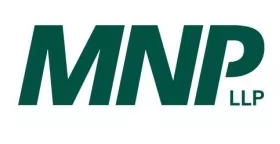In my previous blog post on this subject, I discussed the list of required information in order to substantiate an Input Tax Credit (ITC) claim. At first glance, it may seem straightforward to apply the rules. In recent years, however, there has been an increased level of applying the letter of the law during an audit. Below are some of the issues and pitfalls I have experienced when ensuring accurate information on documentation.
Name of Recipient
The simple requirement of having the recipient's name on an
invoice over $150 can sometimes be the source of great headache for
businesses.
Imagine this scenario. Let's say your business is a group of
companies in the construction industry. One corporation is the
operating company that enters into construction contracts
(Construction A) and the other owns all the equipment (Construction
B). Construction A pays lease payments to Construction B for the
use of equipment.
At the beginning of a project, Construction A hires a
subcontractor to perform a particular trade for your client. When
the subcontractor sends you an invoice, he sends the invoice to
"Construction group of companies". Construction A records
and pays the invoice, then claims the ITCs.
Since the project is in the early stages, Construction A has more
expenses than revenue. For this particular month, the GST / HST
return is in a refund position. Two weeks after the refund return
is filed, you receive a letter from CRA, asking for a description
of your business, why the return is in a refund position, your G/L
listing, top 10 largest invoices, etc. You take the time to respond
to CRA within 30 days, including sending that subcontractor invoice
made out to "Construction group of companies". In the
meantime, while your records are being reviewed, your refund claim
is held by CRA.
A couple of weeks later, you receive another letter from CRA,
denying the ITCs you claimed on that subcontractor invoice.
Technically, the name of the recipient should have been
"Construction A". But because the subcontractor put
"Construction group of companies", the invoice failed the
documentation requirements for Construction A to claim the
ITCs.
You try to explain to CRA that Construction A recorded the
expenditure. You can even show proof of payment to the
subcontractor. But none of that would matter, because the name on
the invoice didn't match the business name.
Similar issues also happen often with re-organizations. One
company would be receiving and paying invoices from suppliers, a
re-org takes place and now a different company carries on the
activities, but suppliers continue to invoice the old entity.
Depending on the nature of the re-org, those ITCs may be denied.
For example, if Construction A has been wound up and all the assets
transferred to Construction B to continue the operations, but
contractors continue to send invoice to Construction A. Even though
Construction B has been paying the invoices, it is not entitled to
the ITCs because the invoices are not made out to the correct
company name.
Supplier's Registration Number
Continuing with the earlier example, suppose the subcontractor
did properly invoice "Construction A", but failed to put
his GST / HST registration number on the invoice. This is an easy
fix. You can call the subcontractor and ask him to re-issue the
invoice with his registration number.
Suppose, then, the subcontractor incorporated a new company to
provide services to you. He issued you an invoice dated May 1 with
GST / HST, but he didn't actually register for GST / HST until
May 2. He puts his registration number on the invoice to you. If
you didn't verify his registration number for May 1, you would
never know the number isn't valid on that date. You are at risk
of the ITCs being denied again, because technically you didn't
have a valid registration number on the invoice.
The issue here, more than making sure you have all the pieces of
information present, is that you are required to verify the
accuracy of the information. You can use the GST / HST registry to
check the validity of the number or call CRA to verify it.
Conclusion
In order to support the ITCs you are entitled to, there are a number of cumbersome hoops to jump through. If you are ever in doubt whether an invoice allows you to claim the ITC, check the criteria required posted in my previous blog entry on the subject. Depending on the size of your operations, you likely don't have the time to check each invoice coming through the door. This makes it even more important to establish a process to assess your ITC eligibility on a periodic basis.
The content of this article is intended to provide a general guide to the subject matter. Specialist advice should be sought about your specific circumstances.

